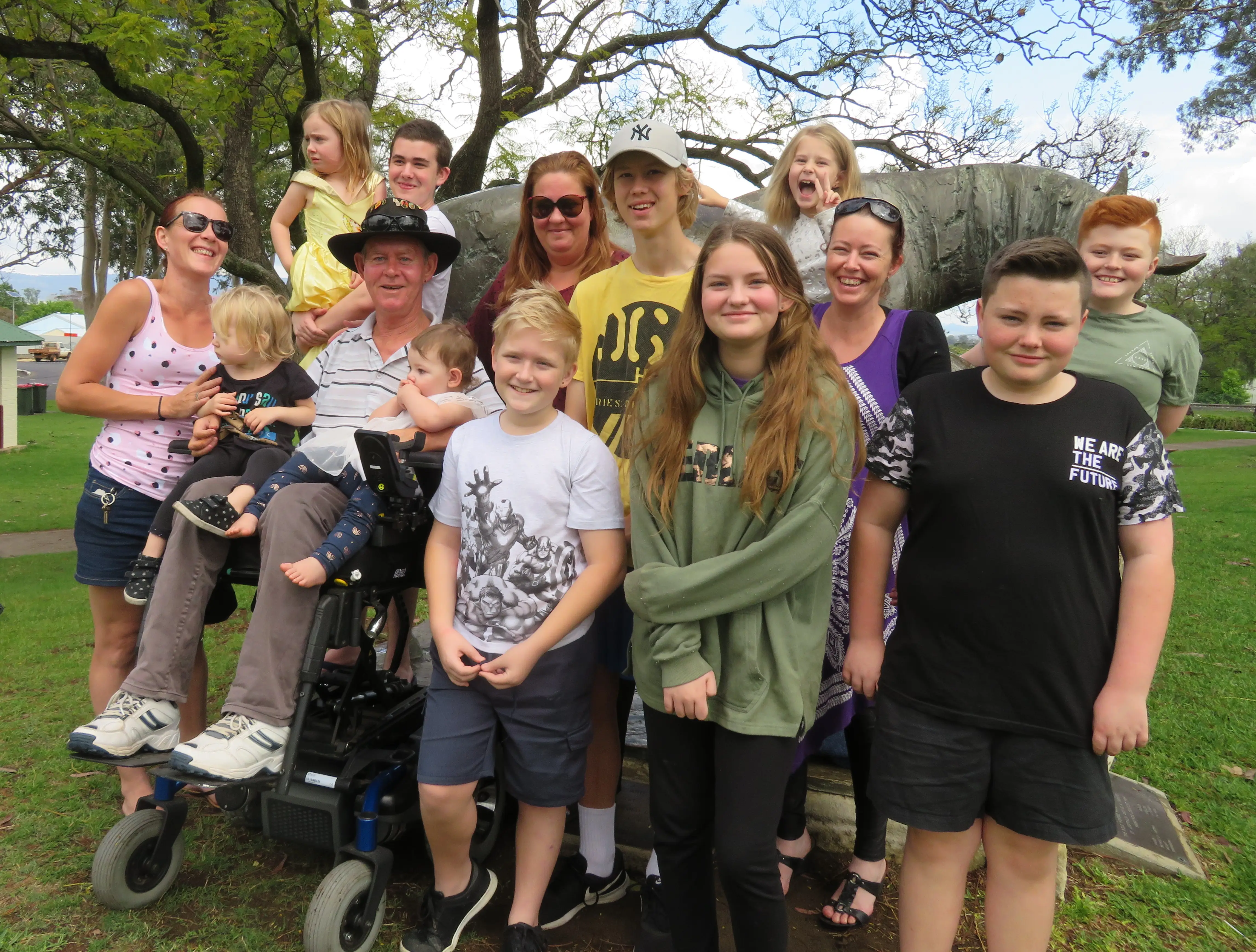
The recent drought-breaking rain across central New South Wales has brought smiles at long last to the faces of long-suffering landholders and residents, among them Michael Beh.
“One of my hobbies is photography and since I started getting support from the National Disability Insurance Scheme through Social Futures I’ve been able to get out and about taking photos of the landscape,” he says.
“I was out there through the bushfires and the empty dams, then this year I’ve been able to watch the land transform from drought to beautiful green and I’ve got a photographic record of it.
“There’s a road between Dubbo and Molong called Banjo Paterson Way that’s got sculptures of animals on bikes along a 100km stretch. There’s about 100 of these sculptures and I shot 49 of them during the drought.
“Now it’s all green again and I’m taking more photos to do a ‘before and after’ sequence, which I’m working on turning into postcards for the Banjo Paterson Museum so they can raise some money by selling them to tourists.”
Michael, 60, has lived in Wellington for most of the past 15 years since recovering from a 2005 motorbike accident in Western Australia’s remote Kimberley region. He broke his neck in the accident and has lived with quadriplegia since then, although he has regained some movement in his arms and hands.
“Not good enough to push a wheelchair or hold power tools, but I can do a lot of things with my arms and hands,” he says. “I’m actually a lot better off than many people with quadriplegia, I’ve only got three locked-up fingers.”
Michael says at the time of his accident, he was “living the dream”.
“I grew up in the Kimberley, left when I was 18 and always wanted to go back, so when I got the chance to return when I was 31 I took it with both hands,” he says. “By the time of the accident, I’d bought a house, I’d gotten married, I was working for myself, things were looking rosy.
“Then my life ended, or that’s the way it seemed for many years.”
After the accident Michael spent four months in hospital in Perth, then was able to transfer to Sydney’s Royal Rehab Hospital because of his NSW family ties and eventually moved in with his mother in Wellington after completing rehab. He still lives with his mother and has a sister living close by.
“I didn’t have access to much personal support beyond my family or therapeutic assistance after I finished rehab, nor did I have much to live on,” he says. “There was a lot of equipment I couldn’t afford and my family and local community had to fundraise to purchase a vehicle for me and modify it – it cost a lot of money.
“People talk about how hard it is going through lockdown, well, I was in lockdown for nine years before the NDIS came along.”
Since joining the NDIS two years ago Michael says his life has “improved out of sight – I’m no longer the prisoner of Wellington.”
“The NDIS has given me the ability to do things and actually live a life,” Michael says. “Before I didn’t have the option of going off to the movies once a week, or going away for the weekend, or pursuing my photography seriously.
“Now that I’ve got a support worker to drive me around I’ve gone from occasionally going out to take a few quick snaps to actually producing something good that I can exhibit or potentially sell. Couldn’t have done that without the NDIS.”
Michael has three adult daughters and 11 grandchildren, but hardly saw them in the years following his accident. One daughter lives in the Hunter Valley while the other two live in Queensland.
“I’ve always kept in touch with my girls, but before I got onto Facebook I rarely saw them or the growing number of grandkids, because it was just too difficult and too expensive,” he says.
“After the NDIS came in I was able to pay for one of my carers to drive me up to Brisbane for the first time and got together with pretty much everyone in my family, including 10 of my grandkids. It was fantastic.”
Michael’s NDIS plan funds personal care and domestic assistance for up to 44 hours a week, and he has extra funding to pay a support worker to drive him to social and community activities for a further eight hours a week.
He also accesses physical and occupational therapy using his NDIS funding, and recently all his internal power points and some outside taps were raised as part of ongoing approved home modifications.
“I’ve got a man cave in the carport that I’ve filled up with ferns, and now I can water them myself,” he says.
Michael continues to experience problems with his short-term memory, resulting from the head trauma incurred at the time of his accident, which makes keeping appointments and managing his care a challenge.
“If you tell me something now, in three days’ time I won’t remember it,” he says. “Luckily I’ve had really good support from Summah, my Social Futures Local Area Coordinator, and from service provider breakthru which coordinates all my care.”
“It took some time to fine tune my plan, but it’s ended up delivering everything I need. The NDIS has completely transformed my life.”
NB: The NDIS is now supporting more than 400,000 Australians with disability, including more than 175,000 people who are receiving support for the first time. On 1 July 2020, the NDIS marked seven years since the inception of the Scheme, and it is now available to all eligible Australians. More than 124,000 people in New South Wales are now being supported.
The NDIS provides eligible Australians with disability with the supports they need to live more independently and to increase their social and economic participation.
